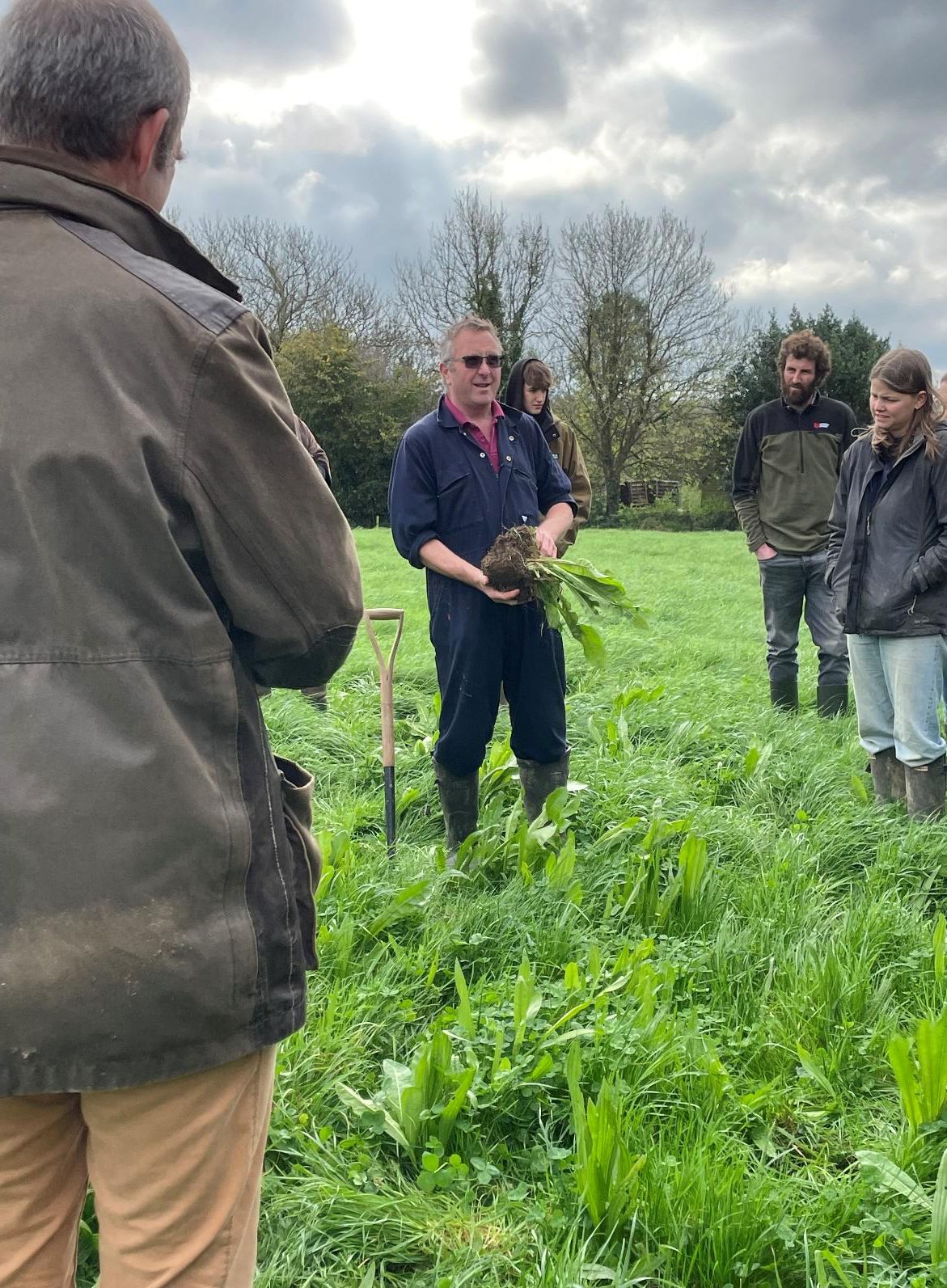
Written by Alex Bebbington, Project Officer, Rural Business School, Duchy College
In November 2024, a farm walk was hosted by Andrew and Claire Brewer, winners of the Carbon Farmers of the Year 2024, as well as being a Farm Net Zero Demo Farm.
The Farm Net Zero (FNZ) project was very proud of Demo Farmers Andrew and Claire Brewer of Ennis Barton for winning the 2024 Carbon Farmer of the Year competition. Carbon Farmer of the Year is run by the Farm Carbon Toolkit and is sponsored by HSBC Agriculture UK. It aims to support farmers on their transition to low-carbon farming by championing farmers who are successfully on that transition and creating a network to learn from.
On Friday 8th November 2024, Andrew Brewer hosted a farm walk to explain some of the practices that led to him winning this year’s Carbon Farmer of the Year competition.
Andrew and Claire farm 1,000 acres at Fraddon, near Newquay, milking 450 autumn-calving Jersey cross cows to supply Arla. Cows calve in late summer and are milked twice a day, sometimes in a 10 milkings in 7 days system. Land is let for field vegetables and potatoes as part of the rotation. Andrew is a Demo Farm for the Farm Net Zero project and carbon footprinting from this has shown that the farm is emitting 0.67kg CO₂e per kg of Fat and Protein Corrected Milk (FPCM). Andrew puts this down to maximising milk from forage, feeding little concentrate, and farming without any fertiliser on grass for the last four years. As well as working to reduce emissions, Andrew is optimising sequestration in hedges and soils.
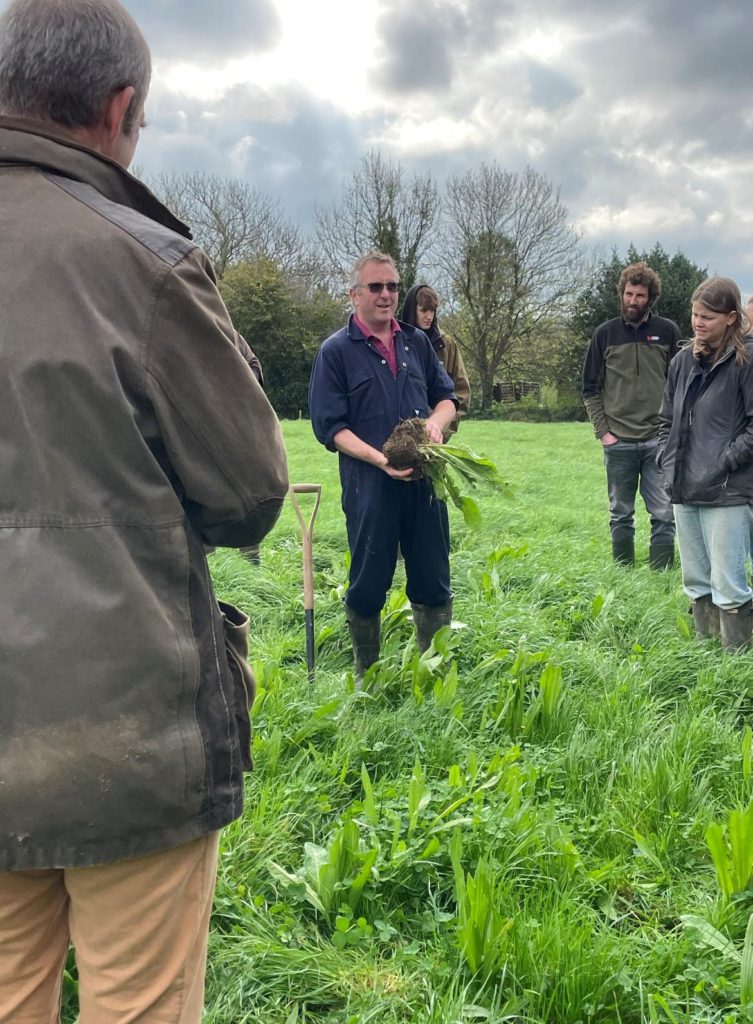
Grazing management and herbal leys
The dairy herd grazes for as much of the year as possible, where conditions allow. Sometimes this may only be for a few hours a day, but Andrew feels this is an important part of his farming practices. Grass is the cheapest feed available and if the cows can harvest it themselves (aiming for 90% of the cow’s feed intake from grazed grass) then this not only reduces costs, but also reduces emissions from tractor diesel. Similarly, letting the cows out to pasture means that they can “spread their own slurry”, further reducing costs and emissions (both from diesel use and from slurry storage).
Herbal leys are used extensively across the grazing platform. Their deep, diverse roots help to improve soil health, potentially capturing carbon into the soil, and access minerals and nutrients deep in the soil profile, allowing for good growth without artificial fertiliser. The impact of the herbal ley on milk yield and quality is being assessed through a Farm Net Zero Field Lab, comparing cow performance on herbal leys and ryegrass/white clover swards. The results of this study will be available soon.
Calving
Cows calve outside in late summer, with the calves then reared in batches in a woodchip bedded shed. The woodchip creates a very clean environment, eliminating the need for bought-in straw. All calves are taken through to finish, with beef bulls kept entire and finished at 12 months and beef heifers finished at 17 months. Youngstock are grazed on a mix of pasture, cover crops and the leftover vegetable crops after the human-grade plants are harvested. This integration of farm enterprises helps to fully utilise nutrients across the farm, reducing the need for buying inputs in.
Soil health: the basis of the farm business
Andrew did a Nuffield Scholarship in 2015 and attributes this to changing his views on soil health as the basis of the farm business. Through the Farm Net Zero project, soil carbon has been monitored over a number of years and the carbon sequestered into these fields has halved the farm’s carbon footprint. Andrew acknowledged that the carbon sequestration is variable, with not all fields capturing carbon, but will continue to monitor soil carbon in the future to identify the long-term trends.
Farm trails
As part of the FNZ Demo Farm work, Dr Hannah Jones of Farm Carbon Toolkit has assisted in the development of a variety of soil-focused trials. When fields are let for vegetables and potatoes, the soil can require assistance back to optimum status. Trials to reduce the negative impacts of these practices have included intercropping between cabbages to reduce bare soil and the risk of runoff. Another trial has followed methods to restore soil health after potatoes. Different mixes were planted after potatoes to assess the improvements to soil structure, stability and worm content. Results from this suggested that Westerwolds ryegrass had the greatest positive impact on soil health, possibly because of its rapid growth creating a large root mass, so Andrew now grows Westerwolds following veg crops. This fits well with the dairy as the Westerwolds produces excellent feed for strip-grazing dry cows before calving, another example of how the whole farm system is integrated to minimise the need for emissions-intensive inputs.
In all, Andrew and Claire focus on running a simple system well, integrating enterprises across the farm. This allows them to minimise emissions from inputs, as well as maximising sequestration into soils and hedgerows.
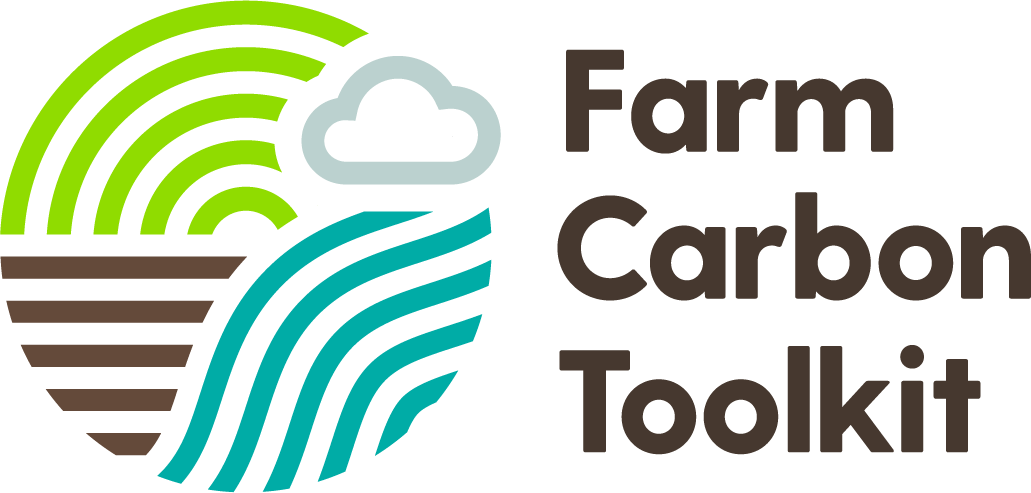
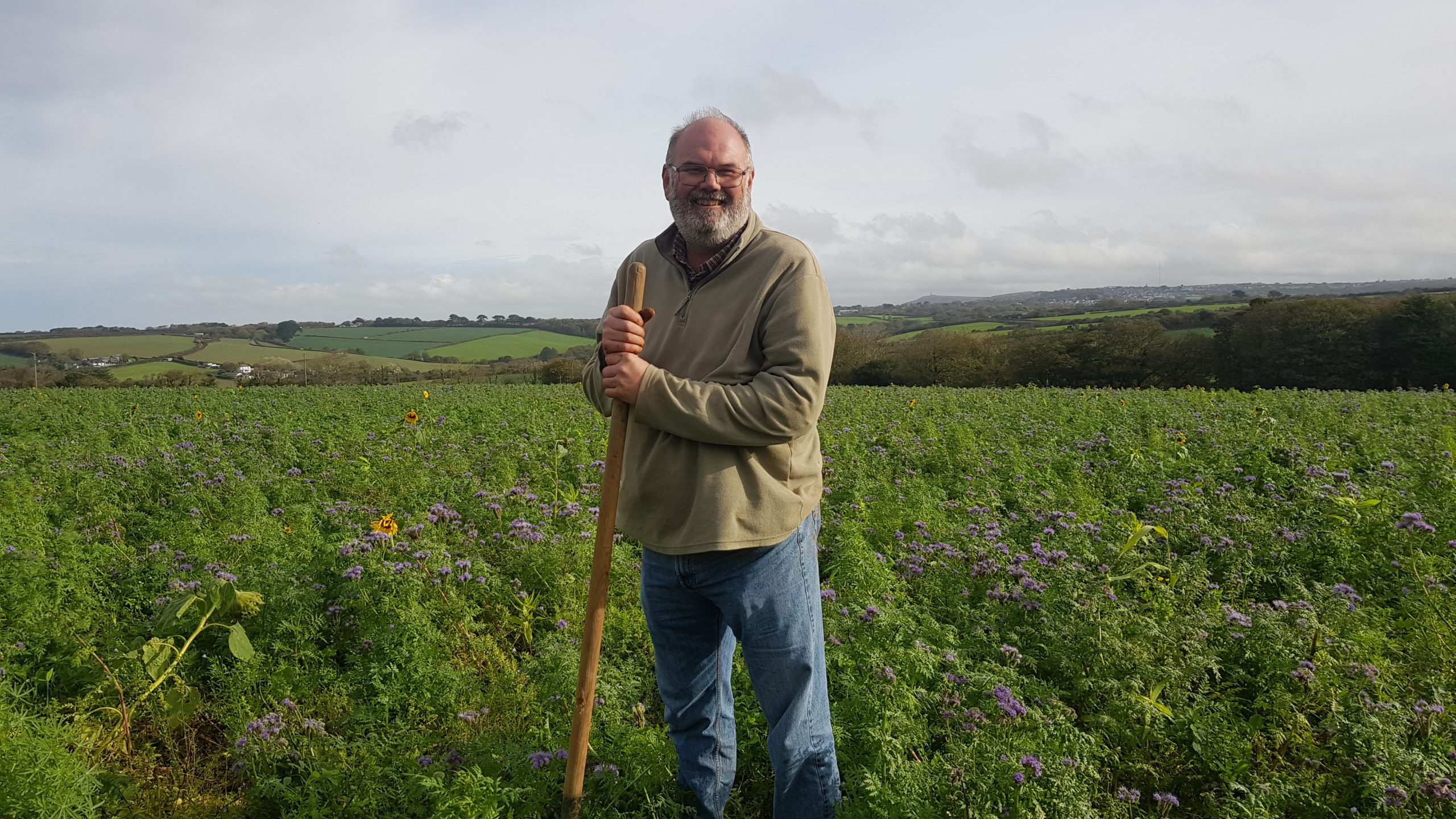

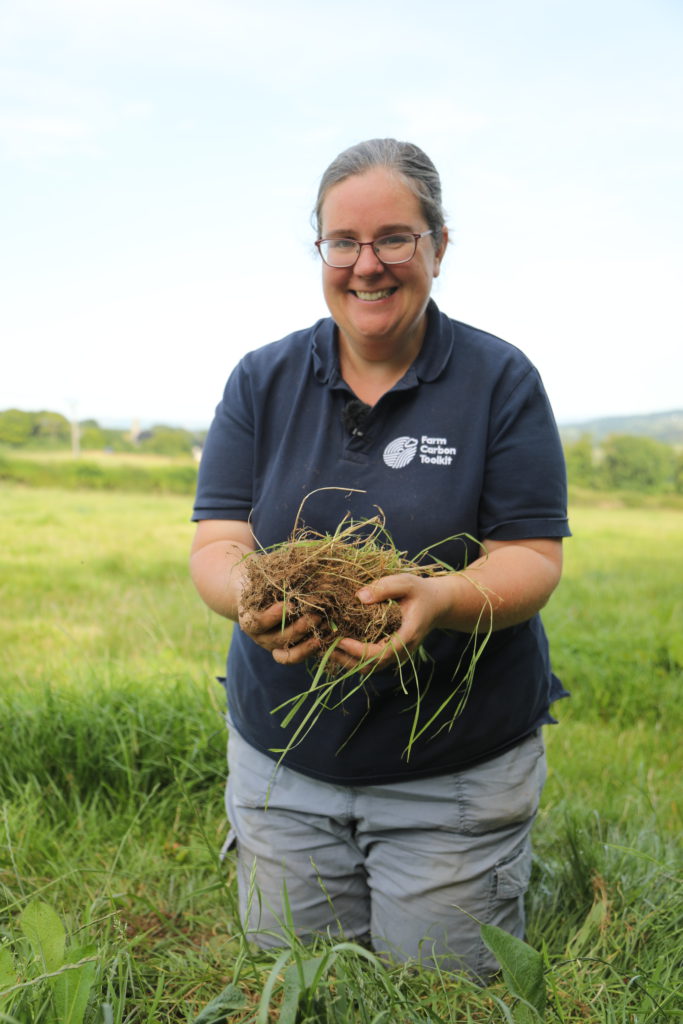
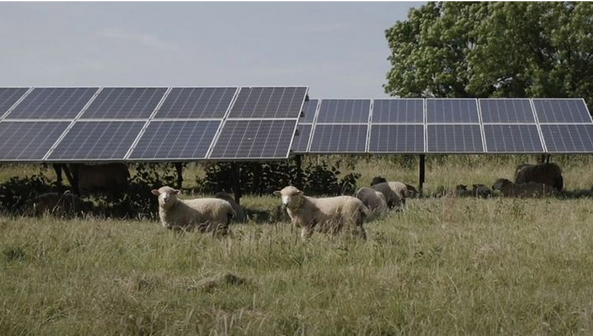
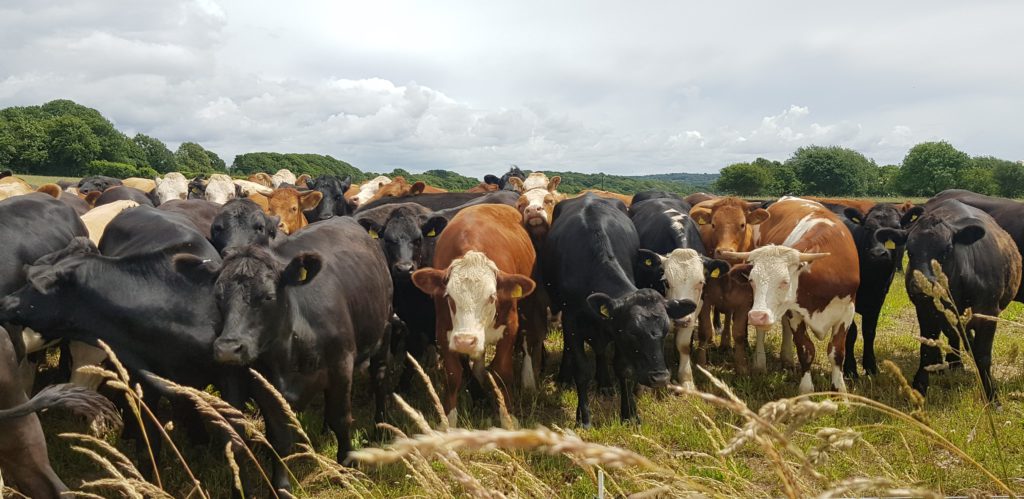
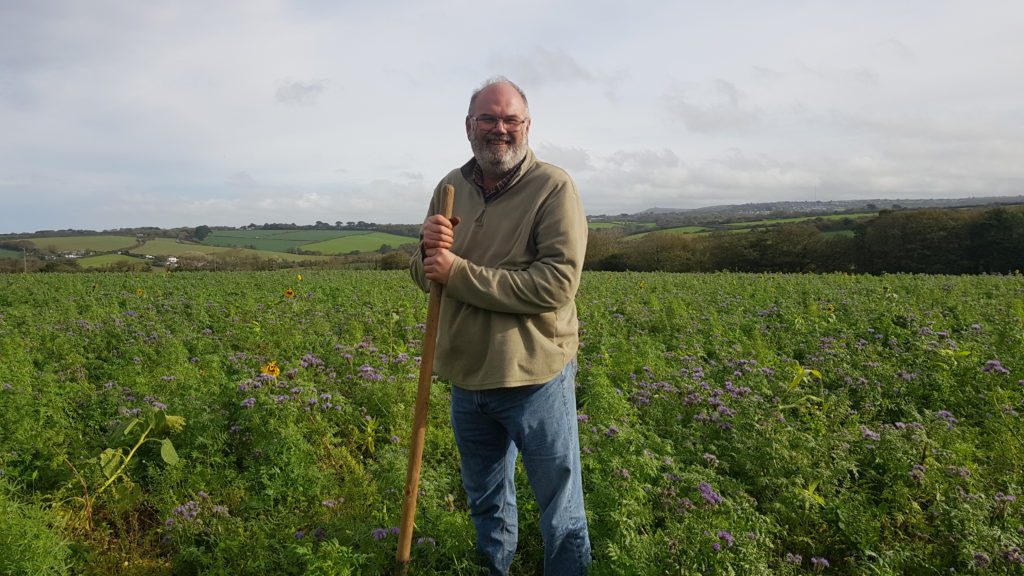
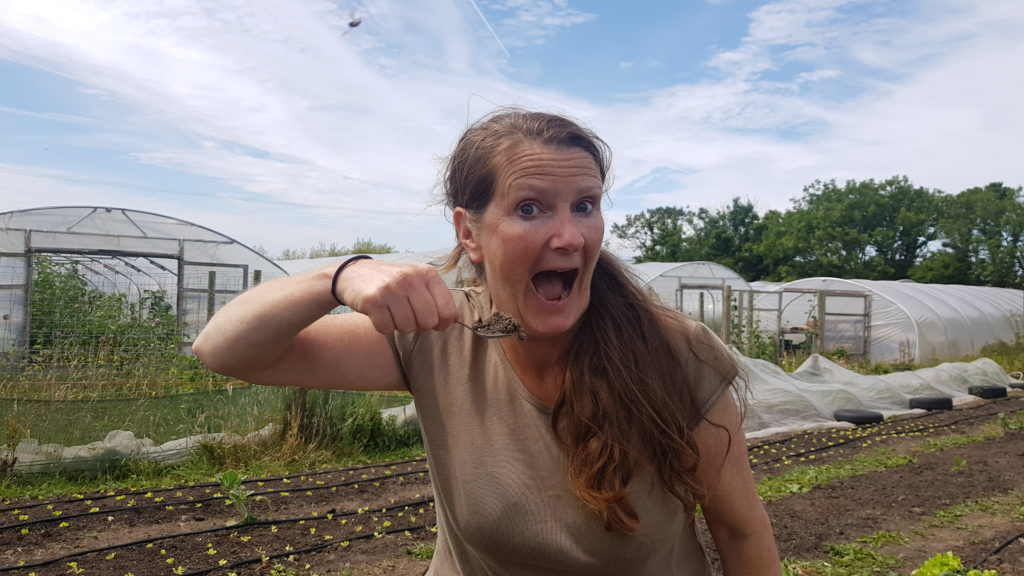

Recent Comments